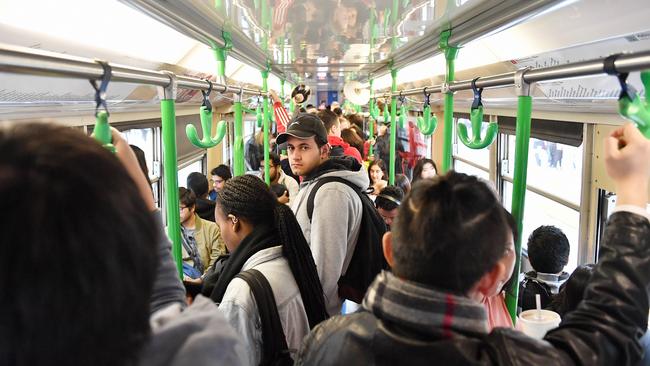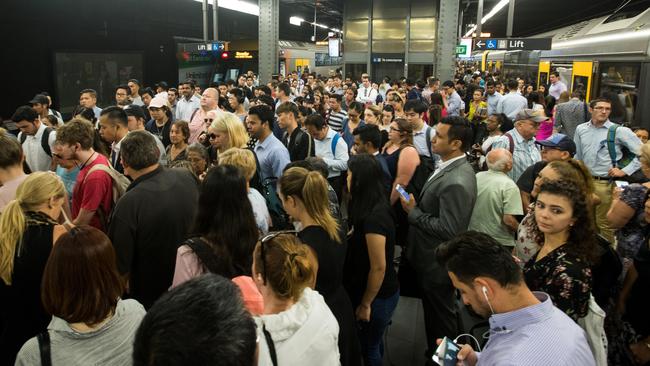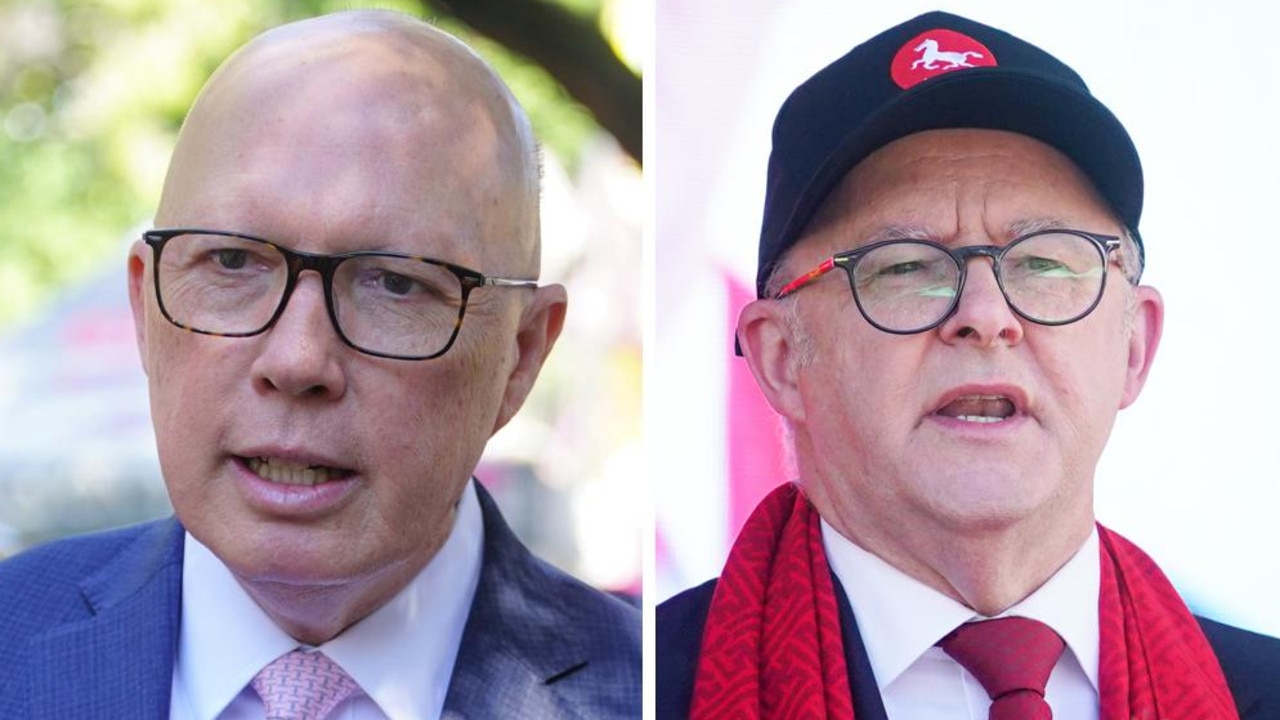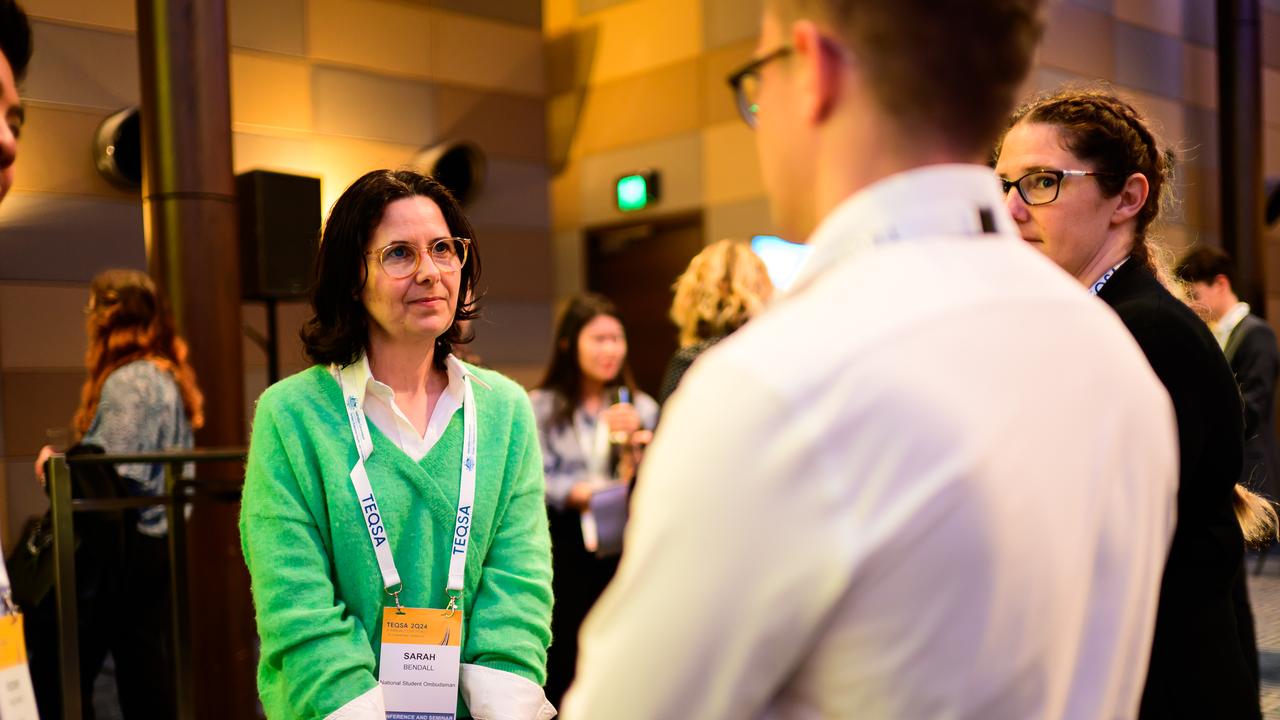Coronavirus Australia: Fears mount public transport could become petri dishes
Getting the country back to work using often crowded public transport networks is emerging as a big challenge for state governments.

Getting the country back to work on often crowded public transport networks is emerging as a growing problem for state governments, with fears intensifying that buses, trams and trains could become a petri dish for coronavirus.
The concerns are particularly acute in east coast’s major cities — figures show that more than 20 per cent of Sydneysiders use public transport to commute to work, around 15 per cent of Melbourne residents catch the bus, tram or train and just over 10 per cent of people in Brisbane eschew cars for a more communal commute.
On Friday, NSW Premier Gladys Berejiklian said her government was currently working on a plan for public transport usage, asserting that continued use of buses and trains was responsible for breakouts of the virus in other countries.
“If you’re not already on the bus or train in the morning, do not catch public transport in the peak,” Ms Berejiklian told reporters. “We know overseas public transport was the main reason why disease spread.”
Ms Berejiklian earlier this week said that social distancing can be ensured on the city’s trains and buses as long as they remain at “30 to 40 per cent capacity,” and flagged a continual effort to encourage employers to allow their employees to keep working from home or offer start and end times outside of peak hour.
Queensland transport minister Mark Bailey said his government was pursuing similar plans while the Victorian Department of Transport “will continue to work on additional strategies, based on Chief Health Officer’s advice to keep Victorians safe,” according to a government spokesperson.
The Victorian rail, tram and bus union has called on the state government to mandate new maximum passenger numbers for each mode of transport and to fully clean the vehicle halfway through each journey.
“Maximum passenger numbers need to be established to ensure safe compliance with social distancing,” Victorian RTBU secretary Loba Grigorovitch told the Herald Sun on Friday.
“This needs to be monitored to ensure personal safety is not compromised.

“In the event any transport mode is unable to accommodate safe social distancing, passengers should be encouraged to wait for the next appropriate service.”
Grattan Institute Transport and Cities Director Marion Terill told The Australian it was “essential” that state governments take such steps.
“The three step plan that the Prime Minister released last Friday said that for each step, people need to avoid peak hour public transport where they can,” she said.
Ms Terrill said that Australia can look to what other cities with high rates of public transport usage in Europe and Asia are doing to address concerns about public transport.
“There are a lot of hygiene measures that can be taken — certainly cleaning and sanitising buses and carriages — but quite a lot of places in Europe, including Switzerland and Poland, are putting in hand-wash situations.
“Some other things that could be compulsory is the wearing of masks, or temperature checks at major railway stations.”
In Adelaide, images posted to social media on Wednesday showed train passengers standing together in close quarters.
Premier Steven Marshall says the government had “massively” upgraded the cleaning on all public transport and encouraged people to avoid peak hour travel.
“Some people are choosing to start work earlier, some people are coming in later in the day to get that greater spread,” he said.
“But we are encouraging people when they’re on public transport, wherever possible, to maintain that social distancing.“And, most importantly, if they’re not well, don’t go to work.”
Ms Terrill said that data she had collected from mobile phone tracking shows that unless concerns about overcrowding are addressed, people will choose alternative forms of transport like cars — potentially creating other problems, like road congestion.
“Before we got to stage one coronavirus restrictions, crowding at urban railway stations was already at half of normal levels,” Ms Terrill said.
“By the time we got to stage three, traffic was one-fifth of the normal amount in Melbourne and Brisbane, and a quarter of the regular level in Sydney. People are making their own decisions and if they don’t think it’s safe they won’t go there. Official instructions are important, but they are only part of the story.”



